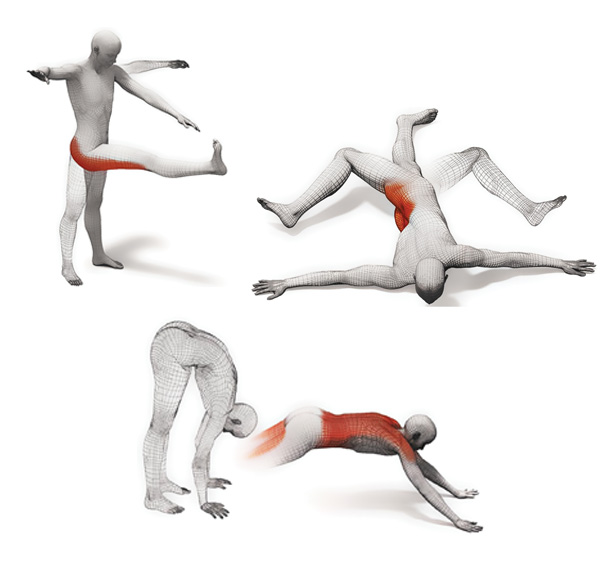Dynamic Movements
Written by Randy Behr | January 1st, 2014 | Leave a comment

Image Credit: ifitnessstudio.net
Not only has the Military changed, but so has fitness. One of these changes is the shift from static stretching to dynamic movements. In the past static stretching had been used prior to most workouts. This has changed as most people have stopped performing static stretching as part of a pre-workout.
Understand this. I am not saying static stretching is bad, but there is a time and place for it. The place is at the end of a workout or on recovery days.
Most people in the sports and fitness field feel static stretching should not be used prior to working out or performing athletic events as it hasn’t proven to increase performance nor proven to decrease athletic injuries, much to most people’s disbelief.
We must still warm-up, but warming up and stretching are two different things. Warming up prepares the body both physically and neurologically. Dynamic movements increase blood flow, increase core temperature, mimic everyday movements, increase athletic performance, increase recovery, recruit fast-twitch muscle fibers and stimulate your central nervous system, to name a few.
Dynamic movements for lack of a scientific definition are activities that involve multiple muscles/joints and incorporate everyday activities. It is also sometimes called ‘functional training.’ In fact, these movements have shown to improve fitness performance by up to 30 percent. According to a service member by the name of Simmons, “my power has increased, my endurance soars and I perform the movements with a smoother, more fluid motion.”
Specific dynamic movements include soldier marches, A-Skips, B-Skips, ‘froggies’ and the scorpion, to name a few. By not performing dynamic movements, your program isn’t properly warming up your body to prepare for exercise, which ultimately increases the chance of injury.
Personally, I have used forms of dynamic movements for approximately 20 years and have completely focused on dynamic movements the last few years. As a result I have better workouts and my flexibility has increased substantially. In addition, my recovery time has been much quicker as well.
With today’s demanding schedules service members face, we must have more effective exercise programs that allow personnel the most efficient workout, preserves safety and provides a quick recovery period. “I love the scorpion. It’s my favorite,” said Senior Chief Information Systems Technician (SW/AW) Amanda Alston. “Normally, when I workout in the morning I have pain and stiffness, but after the movements I feel stretched, [with] no pain and ready to exercise,” added Alston.
Various research has also shown that static stretching increases the chances of dislocating joints because it creates an overstretched feeling in the muscle, which allows the muscle to become too relaxed and produces too large of a range of motion. It also typically causes fatigue and lethargic physical activity.
This change has also been endorsed by other credible sources, such as the National Strength and Conditioning Organization as well as most strength and conditioning coaches in the field of sports medicine.
We must focus on dynamic movements if we want to prepare for every situation whether it is land, air or sea based. It’s time to take our Sailors to a new level as they deserve the best technologies, fitness equipment and training techniques. And by the sound of the responses of the crew dynamic movements are gaining more popularity and are here to stay!